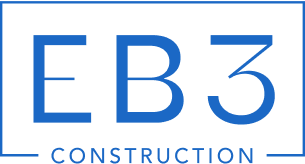Every construction project begins with a promise to deliver something specific by a certain date within budget. Yet nearly 60% of projects experience delays, often because teams lack a clear roadmap from start to finish. Construction project scheduling creates that essential blueprint.
We think of construction project scheduling as the living document that coordinates every moving piece of a build. It maps tasks, sequences, durations, and resources from site preparation through final inspection. This roadmap aligns crews, materials, and equipment while highlighting dependencies and milestones that keep everyone focused on the same completion target.
How Do You Build A Reliable Construction Schedule Step By Step?

Building a reliable construction schedule requires a methodical approach that transforms project scope into actionable work sequences. We follow a proven five-step process that establishes clear deliverables, logical dependencies, and realistic timelines while accounting for risks and resource constraints.
1. Define Scope And Break Down Work
The Work Breakdown Structure forms the foundation of effective scheduling by organizing project scope into manageable work packages. Each package represents a specific deliverable with clear boundaries and measurable outcomes. We apply the 100 percent rule, ensuring every element of project scope appears in the WBS without overlap or gaps.
Creating a hierarchical structure starts with the completed project at the top level, then breaks down into major phases, systems, or areas. Each successive level provides more granular detail until we reach work packages that individual crews can execute and track. Terminal elements should represent 8 to 80 hours of work, allowing for meaningful progress measurement without micromanagement.
The WBS serves as our common language across disciplines and stakeholders. When subcontractors, suppliers, and field teams reference the same work package codes, coordination becomes more efficient and change management stays organized.
2. Sequence Activities And Set Durations
Activity sequencing transforms work packages into a logical network diagram that shows task relationships and dependencies. We identify four types of dependencies: finish-to-start, start-to-start, finish-to-finish, and start-to-finish relationships. Most construction activities follow finish-to-start logic, where one task must complete before the next begins.
Duration estimates require input from crews who will perform the work. We gather optimistic, most likely, and pessimistic time estimates to account for uncertainty. Lead time allows activities to overlap when conditions permit, while lag time builds in necessary delays like concrete curing or permit approvals.
The critical path emerges from this network analysis as the longest sequence of dependent activities. Any delay along this path directly extends project duration. Float calculations show how much delay non-critical activities can absorb before affecting the critical path. We use forward and backward pass calculations to determine early and late start dates for each activity.
3. Allocate Resources
Resource allocation matches available labor, equipment, and materials to scheduled activities based on production rates and availability constraints. We avoid over-allocation by checking resource demand against capacity throughout the project timeline. Skilled trades often become the limiting factor, requiring careful coordination of crew assignments and productivity assumptions.
Equipment scheduling considers mobilization costs, availability windows, and productivity rates for different site conditions. Material procurement aligns delivery schedules with installation sequences, accounting for storage limitations and weather protection requirements.
Resource leveling smooths demand peaks by shifting non-critical activities within their float windows. When leveling extends project duration, we evaluate whether additional resources or schedule compression techniques offer better value.
4. Assess Risks
Risk assessment identifies potential disruptions to schedule performance and develops response strategies. Weather risks vary by season, location, and activity type, requiring contingency plans for outdoor work. Regulatory approvals can cause unpredictable delays, so we track submission deadlines and agency review cycles.
Supply chain risks include material shortages, quality issues, and delivery delays. We identify long-lead items early and establish backup suppliers when feasible. Labor risks encompass skill availability, productivity variations, and potential disputes that could halt progress.
Response strategies include risk avoidance through design changes, risk mitigation through contingency time or resources, and risk transfer through contract terms or insurance. We document trigger points that activate contingency plans and assign responsibility for monitoring risk indicators.
5. Monitor And Update
Continuous monitoring compares actual progress against planned performance through regular field inspections and crew reporting. Look-ahead schedules typically cover two to six weeks, allowing us to identify and resolve constraints before they impact the critical path. These shorter-term plans focus on resource readiness, material deliveries, and coordination requirements.
Variance analysis measures differences between planned and actual durations, identifying trends that could affect future performance. When activities exceed their planned duration, we evaluate whether to accelerate remaining work, adjust downstream activities, or accept schedule delays.
Baseline schedule updates require formal approval and documentation of changes. We maintain the original baseline for comparison while updating current schedules to reflect approved scope changes, unforeseen conditions, or revised strategies. Communication protocols ensure field teams, subcontractors, and stakeholders receive current schedule information promptly.
Which Construction Project Scheduling Methods Should You Consider And When?
Different scheduling approaches serve different construction contexts. We select methods based on project complexity, resource constraints, and stakeholder needs.
The Critical Path Method works well for complex projects with interdependent tasks. CPM identifies which activities drive the finish date and reveals where schedule flexibility exists through float calculations. We find it valuable when dependencies are clear and task sequences are well-defined. However, CPM assumes unlimited resources, so watch for resource constraints that lie outside the critical path.
PERT suits projects where task durations carry uncertainty. This method uses optimistic, most likely, and pessimistic time estimates to calculate expected durations. PERT excels at risk-based estimating for unique or experimental work. The downside is data intensity, requiring three estimates per activity and statistical calculations that can overwhelm simple projects.
Gantt charts provide clear visual communication for timelines and task overlaps. Most stakeholders understand bar charts intuitively, making Gantt displays popular for client presentations and progress reporting. We use them frequently for mid-sized projects where visual clarity matters. Large, complex projects can make Gantt charts cluttered and difficult to read.
Line of Balance serves repetitive construction well, particularly multi-unit projects like high-rises or housing developments. LOB tracks crew flow and production rates across similar work units. This method optimizes resource deployment and identifies bottlenecks in repetitive sequences. It loses effectiveness on projects without repetitive elements or where work varies significantly between units.
Resource-oriented scheduling centers planning around limited, high-demand resources. When labor specialties, equipment, or materials are scarce, this method ensures optimal allocation. We apply resource-oriented approaches when resource availability drives schedule constraints more than task dependencies. The complexity increases significantly with project size and resource variety.
The Last Planner System emphasizes pull planning and collaborative commitment-making. LPS works backward from milestones with increasing detail as deadlines approach. This method strengthens team collaboration and accountability through weekly work planning sessions. Success depends heavily on team cohesion and consistent participation from all trades.
Quantitative scheduling visualizes work quantities over time and connects sequence decisions to cost impacts. Q scheduling displays material quantities, crew productivity, and spatial relationships in integrated charts. This method suits projects where quantity management drives scheduling decisions. The approach requires specialized training and remains less common than other methods.
How Should You Visualize And Manage Schedules Day To Day?

Effective day-to-day schedule management requires the right visual tools combined with disciplined coordination routines. We coordinate multiple visualization approaches to give teams clear sight lines into both the big picture and immediate next steps. This ensures work flows smoothly while maintaining accountability across all project stakeholders.
Visual Coordination Through Multiple Display Methods
Gantt charts form our primary timeline visualization, showing task durations, overlaps, and sequence relationships at a glance. The horizontal bars make it immediately clear when activities start and finish, helping field teams understand how their work connects to other trades. We find Gantt charts particularly effective for communicating with owners and stakeholders who need high-level schedule awareness without getting lost in technical details.
Network diagrams complement Gantt charts by clarifying the logical flow between activities. While Gantt charts show when things happen, network diagrams reveal why they happen in that order. We use these to identify critical dependencies and potential bottlenecks before they impact the schedule. Network diagrams are particularly valuable during critical path analysis, where understanding task logic becomes essential for schedule optimization.
4D BIM integration represents the cutting edge of schedule visualization. By pairing 3D models with time-based scheduling data, we create dynamic visualizations that show the building taking shape over time. This approach helps identify spatial conflicts, coordinate material deliveries, and communicate construction sequences to all project participants. The visual clarity of 4D BIM proves especially valuable when coordinating complex mechanical, electrical, and plumbing installations.
Short-Term Control Through Look-Ahead Planning
We maintain 2-6 week look-ahead schedules to bridge the gap between long-term planning and daily execution. These shorter-horizon schedules focus on constraint removal and resource readiness. Each task in the look-ahead gets evaluated for prerequisites, material availability, and crew assignments. This proactive approach prevents work stoppages and keeps productivity steady.
Look-ahead schedules require constant refinement based on actual field conditions. Weather delays, permit approvals, and material deliveries all influence near-term task sequences. We update these schedules at least weekly, sometimes daily during critical phases. The key is maintaining enough detail to guide daily decisions without overwhelming teams with excessive planning overhead.
Resource coordination becomes crucial at this shorter time horizon. We verify that labor crews, equipment, and materials align with the planned sequence. Over-allocation of resources creates bottlenecks, while under-allocation leads to idle time and cost overruns. The look-ahead schedule serves as our final checkpoint before work execution.
Establishing Regular Coordination Rhythms
Weekly coordination meetings anchor our schedule management process. These sessions bring together superintendents, foremen, and key subcontractors to review progress against the baseline schedule. We compare planned versus actual completion percentages, identify variances, and adjust upcoming work sequences accordingly. The meetings maintain momentum while catching problems early.
Baseline schedule updates require formal approval processes. We distinguish between minor adjustments that reflect field realities and major changes that alter project scope or completion dates. Minor updates happen regularly as part of normal schedule maintenance. Major baseline revisions require owner approval and often trigger contract modifications or change orders.
Progress tracking relies on consistent data collection from the field. We use mobile applications and digital reporting tools to capture real-time completion percentages. This eliminates the lag time between field progress and schedule updates that historically plagued construction projects. Timely data enables proactive decision-making rather than reactive problem-solving.
Communication And Stakeholder Alignment
Schedule updates flow to all project participants simultaneously. Field teams, subcontractors, owners, and designers all work from the same current data. We distribute updates through project management platforms that provide role-based access to relevant schedule information. This eliminates the confusion that arises when different parties work from outdated schedules.
Visual coordination improves when everyone sees the same information. We post current schedules in job trailers, gate houses, and common areas where all trades can reference them. Digital displays showing real-time progress create transparency and accountability. Teams perform better when they understand how their work contributes to overall project success.
Change communication requires immediate distribution to prevent downstream impacts. When schedules shift, we notify affected parties within hours rather than days. Early notification allows subcontractors to adjust crew assignments, owners to modify inspection schedules, and designers to align deliverable dates. Speed of communication directly impacts schedule recovery time when problems arise.
What Pitfalls And Fixes Should Teams Plan For In Construction Project Scheduling?
Construction scheduling problems often emerge from predictable sources. We see unrealistic budgets paired with durations that ignore site realities, missing steps in scope definition that create gaps later, and poor resource management that leaves projects scrambling when key crews or equipment become unavailable.
Weather disruptions, regulatory delays, supplier issues, equipment failures, and communication breakdowns represent the external forces that can derail even well-planned schedules. These challenges require both preventive strategies and responsive fixes when problems surface during construction.
Resource Leveling Smooths Demand Patterns
Resource leveling addresses over-allocation by adjusting activity timing within available float. We balance crew and equipment demand across the project timeline, preventing situations where multiple trades compete for the same resources simultaneously.
This technique may extend some durations but creates more realistic resource patterns. When we identify conflicts between concrete crews on different building phases, resource leveling helps us sequence these activities to avoid shortages and maintain steady productivity.
The key benefit lies in preventing resource bottlenecks before they occur. Teams can work at sustainable paces without the inefficiencies that come from rushed mobilization or extended idle time.
Schedule Compression Techniques Address Slipped Dates
When projects fall behind, schedule compression offers two primary approaches. Fast-tracking overlaps sequential activities that were originally planned to occur one after another, reducing overall duration without adding resources.
Crashing adds extra resources to critical path activities, shortening durations through increased labor, equipment, or overtime. Both methods carry risks that require careful management during implementation.
Fast-tracking increases coordination complexity and rework potential when parallel activities create conflicts. Crashing raises direct costs and can reduce productivity if resource additions exceed optimal crew sizes. We monitor these trade-offs closely when applying compression techniques.
Forensic Schedule Analysis Identifies Root Causes
Forensic schedule analysis compares planned versus actual performance to identify delay sources and their impacts. We examine baseline schedules against progress records, change orders, and daily reports to understand what went wrong and why.
This analysis serves two purposes: resolving current disputes about delay responsibility and improving future project planning. By documenting delay patterns, we can better estimate durations, identify high-risk activities, and develop more effective contingency planning.
The process involves detailed review of schedule updates, progress photographs, meeting minutes, and correspondence to create a comprehensive timeline of events. These insights help prevent similar issues on subsequent projects.
Continuous Risk Monitoring Enables Early Intervention
Rather than waiting for problems to manifest, continuous risk monitoring tracks leading indicators and trigger events. We maintain updated risk registers that identify weather windows, supplier delivery schedules, permit approval timelines, and equipment maintenance requirements.
When monitoring reveals potential delays, we can adjust sequences, revise durations, or reallocate resources before impacts cascade through dependent activities. This proactive approach prevents small issues from becoming major schedule disruptions.
Communication plans ensure that field teams, subcontractors, and suppliers share information about emerging constraints quickly. Regular coordination meetings focus on upcoming work windows and potential conflicts, maintaining visibility across all project elements.
Conclusion and Next Steps

A solid construction project scheduling workflow starts with a clear WBS, logical sequencing, and realistic durations, then stays on track with resource-aware planning, risk assessment, and frequent updates. Choose methods that fit the job—CPM for complex dependencies, LOB for repetitive flow, PERT for uncertainty, LPS for collaboration—and visualize plans with Gantt/network diagrams and, when helpful, 4D models. Set short look-aheads, communicate changes fast, and use resource leveling, compression, and forensic reviews when needed.
The goal is simple: keep work flowing, decisions timely, and the project aligned with cost, quality, and completion targets. At EB3 Construction, we build schedules that adapt to real-world conditions while maintaining focus on delivering projects on time and within budget. When you’re ready to strengthen your next project’s scheduling approach, contact us to discuss how we can help execute your vision with precision and reliability.




